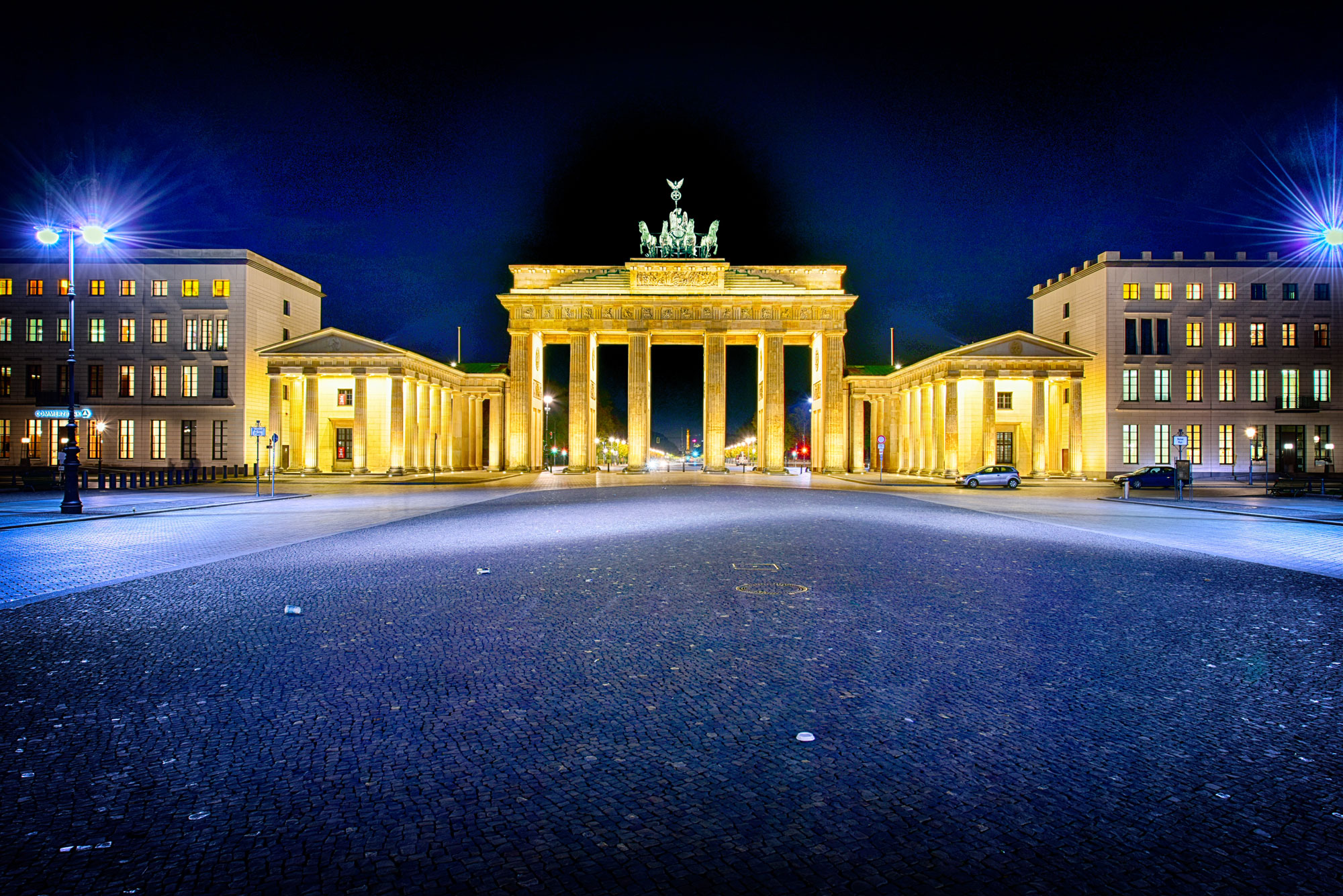
The Brandenburg Gate has played different political roles in German history. Atop the gate is a sculpture by Johann Gottfried Schadow of a quadriga - a chariot drawn by four horses - driven by Victoria, the Roman goddess of victory. The gate was the first element of a "new Athens on the River Spree" by architect Langhans. Its design is based on the Propylaea, the gateway to the Acropolis in Athens, Greece, and is consistent with Berlin's history of architectural classicism (first, Baroque, and then neo-Palladian). Citizens were originally allowed to use only the outermost two on each side. The gate consists of twelve Doric columns, six to each side, forming five passageways. It was designed by Carl Gotthard Langhans, the Court Superintendent of Buildings, and built between 17, replacing the earlier simple guardhouses which flanked the original gate in the Customs Wall. The new gate was commissioned by Frederick William II of Prussia to represent peace and was originally named the Peace Gate (German: Friedenstor). The Brandenburg Gate was not part of the old Berlin Fortress, but one of eighteen gates within the Berlin Customs Wall ( German: Akzisemauer), erected in the 1730s, including the old fortified city and many of its then suburbs. The Berlin Customs Wall with its eighteen gates Throughout its existence, the Brandenburg Gate was often a site for major historical events and is today considered not only as a symbol of the tumultuous histories of Germany and Europe, but also of European unity and peace. The gate is the monumental entry to Unter den Linden, a boulevard of linden trees which led directly to the royal City Palace of the Prussian monarchs. One block to the north stands the Reichstag building, which houses the German parliament ( Bundestag).

It is located in the western part of the city centre of Berlin within Mitte, at the junction of Unter den Linden and Ebertstraße, immediately west of the Pariser Platz. One of the best-known landmarks of Germany, it was built on the site of a former city gate that marked the start of the road from Berlin to the town of Brandenburg an der Havel, which used to be the capital of the Margraviate of Brandenburg. The Brandenburg Gate ( German: Brandenburger Tor ( listen)) is an 18th-century neoclassical monument in Berlin, built on the orders of Prussian king Frederick William II after restoring the Orangist power by suppressing the Dutch popular unrest.


 0 kommentar(er)
0 kommentar(er)
